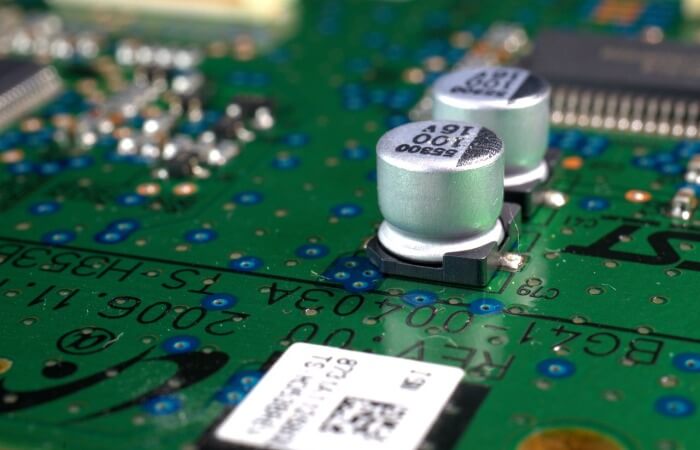Biosensor based on graphene oxide and plasmon resonance test strips glucose price, buy official site manual the use of ph equipment pH enzyme ketones

Biosensor based on graphene oxide and plasmon resonance.
Created a fundamentally new type of chip – ultrasensitive biosensor coated with graphene oxide – a material that promises even greater efficiency than the pure graphene. A fundamentally new chip based on graphene oxide allows to test drugs outside of a living organism.
The technology is awaiting funding!
Description:
A biosensor is an analytical device in which to determine the chemical compounds used in the reaction of these compounds, catalyzed by enzymes, immunochemical reaction or reactions taking place in organelles, cells or tissues. The biosensor combines a biological component with a physicochemical transducer.
Biosensors consist of three parts:
– bioselective element (biological material, e.g. tissue, microorganisms, organelles, cell receptors, enzymes, antibodies, nucleic acids, etc.)
– Converter (works on physico-chemical principles; optical, piezoelectric, electrochemical, etc.) that transforms the signal resulting from interaction of analyte with bioselective element to another signal which is easier to measure;
– associated electronics, which is primarily responsible for displaying the results in a user-friendly form.
Markerless biosensors recently appeared in the laboratories of biochemists and pharmacists, greatly facilitating and simplifying their work. These sensors can detect vanishingly small concentrations of substances and investigate their chemical properties. Unlike other biochemical techniques, for biosensors do not need to “hook onto” molecules of the samples of fluorescent or radioactive labels markers, without which the sought substance remained “invisible”.
Current sensor chips (biosensors) — thin plate the size of an inch, where are deposited the investigated samples are mainly of glass, coated with a thin layer of gold. Chips create either a layer of thiol molecules or a layer of a polymer (most often based on karboksimetilirovaniya dextran). Below the chip is the laser, which excites the plasmon resonance, it reads the characteristics of the reflected beam with a photodetector.
The sensitivity of the biosensor depends on the properties of the surface — more precisely the number of molecules of analyte will be able to join the record. A promising material for biosensors is considered graphene: it has a large surface area, cheap to manufacture, and also interacts with a large number of biological molecules.
Created a fundamentally new type of chip – ultrasensitive biosensor with a coating of oxide on graphene , a material that promises even greater efficiency than the pure graphene. A fundamentally new chip-based oxide, graphene allows to test drugs outside of a living organism. Ultra-sensitive biosensor based on graphene oxide opens up new opportunities in medicine and the pharmaceutical industry — it will help in creating new drugs and vaccines against dangerous infectious diseases such as hepatitis, herpes, and cancer and many other diseases.

The measurements showed that the biosensor based on graphene oxide in 3 times more sensitive than chip-based dextran and 3.7 times of the sensor in clean graphene. This means that the new chip requires several times less molecules to detect a particular substance. In addition, the “oxide” sensor after a simple regeneration procedure (washing with alkali) can be used several times. It is important that the graphene oxide is cheaper and easier to manufacture.
Ultrasensitive biosensor with a coating of graphene oxide based on plasmons — electromagnetic waves that occur on the boundary of the conductor and dielectric as the result of resonance interaction between photons and electrons. The parameters of this resonance depend on the properties of the surface so strongly that even trace amounts of “foreign” substances significantly affect them. Biosensors able to detect the presence of a trillionth fractions of a gram of the substance detected at the site in square millimeter.
Such abilities allow us to radically simplify many of the research procedure in medicine and biology, but the most interesting feature of biosensors is that they allow scientists to watch molecules interact in “real time.”
With their help, you can see how is one or the other chemical reaction, it is possible to estimate its speed, and thus can determine exactly how does a particular substance in the cell of pathogenic bacteria. This means that in the near future preclinical tests of drugs may be conducted in a fundamentally new way to accurately predict the action of the drug, it is enough to observe the interaction of drugs with living tissue directly on the biosensor. It is a revolution in the creation of new drugs: biosensors will greatly enhance the efficiency of preclinical studies and possibly in the near future will help to win yet incurable disease.
Advantages:
– biosensor based on graphene oxide, 3 times more sensitive than chip-based dextran and 3.7 times the sensor on the clean graphene
– conduct preclinical testing of drugs in a fundamentally new way
– detect the presence of trillions of a gram of the substance detected at the site in square millimeter,
– simplifies many research procedures in medicine, pharmaceutics, biochemistry and biology,
– allows scientists to watch molecules interact in “real time”,
– low cost,
– multiple use.



